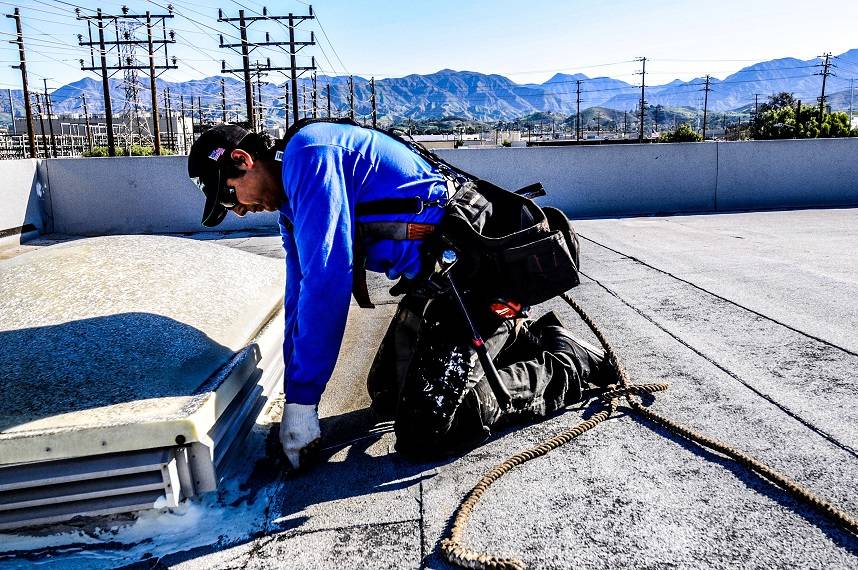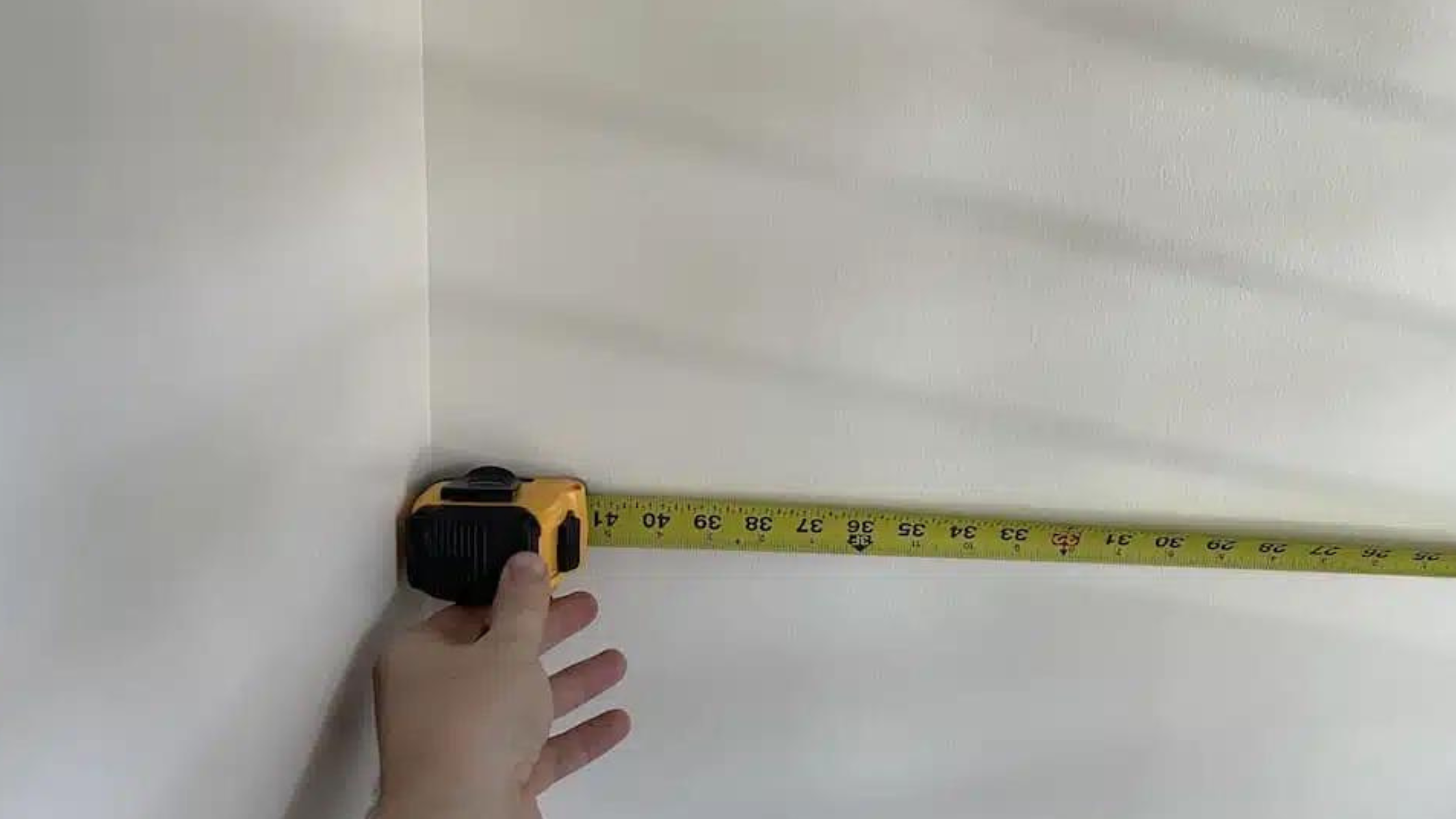Schedule Free Estimate
1 Easy Efficient Way to Repair a Flat Roof Step-by-Step
Flat roofs can be a nightmare when it comes to water pooling and leaks. But that is not to say that flat roofs don’t have unique benefits to offer.
For example one huge benefit is that flat roofs can be easily repaired more often than pitched roofs. Pitched roofs usually require more work due to the shingle roofing systems that pitched roofs usually have, whereas with a flat roof you don’t need to deal with complicated, interlocking shingles. Instead, it’s a straight patch job.
So, say goodbye to water stains on your ceiling and the constant worry of impending leaks, and let’s dive into the world of flat roof repair.
Tools You’ll Need:
Tape Measure
Ladder
Broom
Towel
Sealent
Step 1. Determine How Far The Leak is from the 2 closest walls.
Discovering the source of a leak on a flat roof can be a bit of a puzzle, as water often travels a distance before making its presence visible. Take a more personalized approach by starting inside the property. Look for areas that appear damp or discolored due to water damage, so you may determine the relative position under the roof. Once you identify these spots, grab a tape measure and determine their proximity to the closest walls.
For example, if the leak is 15 in from one wall and 20 in from the other, look in a similar area on the roof.
Step 2. Examine the flat roof’s low slope above the area you measured.
Get a sturdy ladder and climb onto your roof. Be careful, since being on the roof can be dangerous, especially during the rainy season. Go above the leaking area and search around it, trying to determine how the water could flow under the roof and into the rooms below.
Most flat roofs aren’t perfectly flat. They often slope slightly to drive water off the sides. That means water can seep into damaged spots higher on the roof and run down towards lower spots.
Have a friend hold the ladder steady for you. For additional safety, wear a harness and secure it to a chimney, temporary guardrail, or another anchor point.
Step 3. Identify any punctures, tears, or cracks in the roof.
These spots should be pretty easy to identify. Any place that looks worn out can be responsible for water damage. The largest areas of damage are big problems that need to be patched up right away, but avoid overlooking small spots. Take care of them right away before they turn into bigger problems.
Any spot that allows water in is an immediate issue. As long as water gets into the roof, the wood framework underneath will begin to rot and become unstable over time.
Patching these spots will preserve your roof for longer. Flat roofs generally last up to 25 years before needing to be replaced. If your roof is in bad condition, you may need to call a professional.
Step 4. Check the roof’s seams for cracks and holes.
If the roof’s membrane seems to be secure, the sides may be leaking. Look around the edges of the roof. Water can leak in through spaces between the roof and walls, vents, chimneys, or the metal flashing strips used to repel water.
These areas can be patched up similarly to leaks in the membrane. A good roofing caulk will fill in any gaps or cracks.
Step 5. Sweep away water and debris from the damaged area.
Always clean up any areas you wish to repair. Any leftover dirt, gravel, and water in the area can prevent the repair material from bonding to the roof. In addition, sweeping the area clear gives you a better view of the damage.
To clear the roof, use a tough broom. Get as much debris off the roof as possible.
Step 6 Dry any areas before attempting to treat them.
To make effective repairs, always dry out the roof first. You only need to remove moisture from any areas you plan on treating with cement or sealant. Small areas can be dabbed dry with paper towels.
Waiting for sunny weather helps dry out the roof. If you need to treat a large spot or the entire roof, you pretty much have to give the roof a day or 2 to dry on its own.
Conclusion
There you have it, flat roofs don’t have to be intensely complicated repairs but definitely call a roofing company to repair the flat roof if large sections of decking are rotted and need to be replaced. Flat roofs are designed to gradually slope to prevent water from pooling. If water pools in large areas, have a roofing company or general contractor assess this and make necessary repairs.
Central Roofing Company Headquarters
555 W. 182nd Street
Gardena, CA 90248
310-527-6770

Get A Quote
One of our roofing estimators will gladly meet you to discuss your options and follow up with a free, no-obligation, written estimate.
At Central Roofing Company, we understand that a sturdy and reliable roof is crucial for the success and safety of your commercial property. Our team of highly skilled and trained roofing professionals is committed to delivering exceptional craftsmanship and superior service in every project we undertake.
555 W. 182nd St. Gardena, CA 90248
Ph: 310-527-6770
Our Office Locations:
Our Services
CA license #684960 – Central Roofing, 2024 ©All Rights Reserved | Terms of Use | Privacy Policy | Built by Dymic

